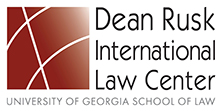Abstract
An economic and monetary union (EMU) is an area where there is complete freedom of movement of persons, goods, services, and capital. The financial markets in an EMU are completely integrated while the national currencies are conventional and have fixed exchange rates. Ultimately the national currencies may be replaced by a common currency and there will be one monetary policy. The EMU is considered to be the highest form of economic integration. This paper examines two examples of a monetary union; the first part focuses on the blueprint for a European monetary union as laid out in the Treaty on EU, and the second part analyzes the American example, i.e., the Federal Reserve System. The third part discusses the similarities and differences between the two systems and argues that although both systems look very similar, there are important differences which can be explained mainly by the lack of political integration in Europe.
Repository Citation
Van Den Cruijce, Johan, "Legal Foundations and Institutional Framework of the Monetary Union in Europe and in the United States" (1994). LLM Theses and Essays. 171.
https://digitalcommons.law.uga.edu/stu_llm/171
Included in
Banking and Finance Law Commons, Comparative and Foreign Law Commons, Constitutional Law Commons, European Law Commons, International Law Commons, Law and Economics Commons, Law and Politics Commons, Legislation Commons


